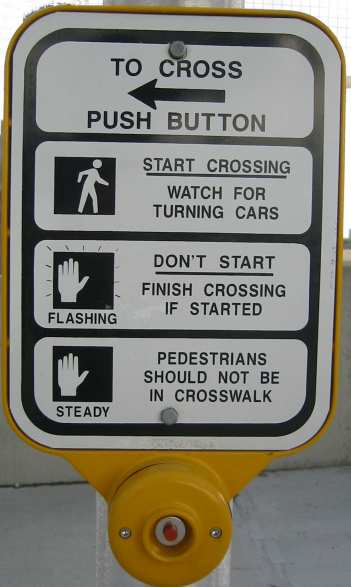
I, like many other cyclist bloggers have written about cyclists as drivers. Cycling does affect the way one drives. It changes one’s perceptions. And, it creates a broader context within which to operate.
In such writing, almost as an aside, pedestrians are mentioned as semi-road users. Pedestrians don’t actually use roads in the same way as vehicles. But, they are part of the flow of traffic.
As the number of cyclists on the roads has increased, so too has the friction between cyclists and pedestrians. Most of the animosity is on the part of pedestrians. Some of them fear cyclists due to close calls either on sidewalks or when crossing the street.
Fear is a powerful motivator. It is also one of the prime sources of hatred. People fear the unknown. And, they hate what is different from themselves.
Cyclists do resent pedestrians to a lesser degree. This resentment is primarily a product of encounters with oblivious street-crossers who step off of a curb without looking where they’re going. Most cyclists have had to swerve into traffic or brake in an unsafe manner to avoid a pedestrian who has unexpectedly stepped into their path.
Regardless of whether the cyclist or the pedestrian is at fault in these situations, injuries — and an occasional death — have occurred. Some of these accidents get a lot of media attention since bicycles are ordinarily considered to be harmless. Any time a major injury results from one of these accidents, the media and the public immediately begin lamenting about the injured party and railing against the recklessness of cyclists.
These high profile incidents fuel the flame which ignites antipathy between cyclists and pedestrians. At such times, they appear to be two distinct groups, just like drivers and cyclists are. But, the main difference is that while not all cyclists are drivers, all cyclists are pedestrians.
One would think that this fact would reduce the friction between the two groups, or at least make it easier for cyclists to anticipate the actions of pedestrians. For some people it probably does. For others, it probably does not, otherwise there would be fewer close encounters and accidents.
As it turns out, I’m a cyclist who has been doing a lot of walking recently. Some of the walking is related to appointments where I have to park a fair distance from the building I’m visiting. And some of it is a desire to add more physical activity into my day. Even though I spend time riding my bike, I also spend a lot of time sitting in front of a computer. Sitting for long periods of time staring at a computer monitor is not good for one’s health. It’s important to move around throughout the day. And the quickest way to incorporate additional movement into one’s life is by doing more walking.
So now I’m a pedestrian a good deal of the time. Of course, I saw this as a perfect opportunity for studying how being a cyclist has affected me as a pedestrian.
To begin with, I do not walk around in public playing with my phone. This may be uncool, but it is safer and it provides downtime from the constant barrage of information and random communications. Whoever is trying to reach me can wait. I want time to myself to unwind and observe the world around me.
I also refrain from listening to music if I’m walking on a busy street. Earphones make it harder to hear traffic, and as much as I enjoy listening to music, I enjoy hearing my own thoughts more.
When I get to an intersection where I want to cross the street, I stop and look both ways. Unlike many other pedestrians, I look for all vehicle types, cars, bicycles, motorcycles, and scooters. I also look for pedestrians and people in wheelchairs. I once saw a guy in a wheelchair come close to getting hit by a car when he was traveling along the side of the road. Not all roads have curb cuts, and consequently, wheelchair users are forced to travel in the street.
In order to avoid inconveniencing or endangering anyone, I make myself aware of my surroundings. This way, I don’t crash into anyone or get into anyone’s way.
I always press the walk signal button and I wait for the signal to change. Then I cross the street — but not without looking for right turning cars or bicycles.
Even when there is no walk signal, I do not step off of the curb without making sure all of the drivers at the intersection see me. Knowing that many drivers roll through stop signs, I don’t take any chances. And knowing that some cyclists don’t even slow down at stop signs, I watch any approaching bicycles very carefully to determine whether the cyclists see me and whether it looks as if they’re slowing down.
I make eye contact with them just as I would with a driver. If they’re moving at a high rate of speed, I wait for them to pass before crossing. It’s not worth the risk of stepping into the road and relying on their judgment about passing in front of me or behind me.
In short, having been an avid cyclist for many years, I walk like a law abiding cyclist and watch for traffic like a seasoned driver. Someday, I hope, cyclists and pedestrians will realize that they have more in common than they have differences. Perhaps this will forge a bond built on mutual respect and understanding. And maybe it will eventually result in an alliance whose goal is to promote mutual safety. This won’t happen overnight. But we can move towards it one step at a time.


